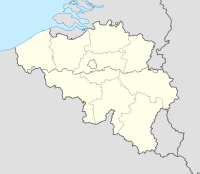| Capture of Westhoek | |||||||
|---|---|---|---|---|---|---|---|
| Part of The Third Battle of Ypres, in the First World War | |||||||
 Gheluvelt Plateau: Inverness Copse, Westhoek and Glencorse Wood | |||||||
| |||||||
| Belligerents | |||||||
|
|
| ||||||
| Commanders and leaders | |||||||
| Sir Douglas Haig | Crown Prince Rupprecht | ||||||
| Strength | |||||||
| 2 divisions | 6 regiments | ||||||
| Casualties and losses | |||||||
|
25th Division: 1,291 18th (Eastern) Division: 1,526 (31 July – 10 August) | 4th Army: 16,000 (1–10 August) | ||||||
| German casualties were counted in ten-day periods. | |||||||
Gheluvelt Plateau: Hooge, Inverness Copse and Glencorse Wood | |||||||
The Capture of Westhoek (10 August 1917) took place on the Gheluvelt Plateau near Ypres in Belgium, during the Third Battle of Ypres (31 July – 10 November 1917), in the First World War. The British Fifth Army attacked the Gheluvelt Plateau at the Battle of Pilckem Ridge (31 July – 2 August) but the German 4th Army had fortified its positions in the Ypres Salient since the Second Battle of Ypres (22 April – 25 May 1915). The British reached the first objective in the south and the second objective on the northern flank, losing some ground to German counter-attacks. A British attack due on 2 August was postponed because torrential rain from the afternoon of 31 July until 5 August washed out the battlefield.
The ground had been churned by artillery-fire into sloughs of mud, flooded shell craters, fallen trees and barbed wire. After several postponements, the attack was set for 10 August. British artillery fired a preparatory bombardment from Polygon Wood to Langemarck for the main attack due on 14 August but the German guns concentrated on the Gheluvelt Plateau. British counter-battery fire was hampered by low cloud and rain, which made air observation extremely difficult and shells were wasted on empty gun emplacements. Fresh divisions took over by 4 August but the front-line troops had to be relieved every 48 hours, which exhausted all of the infantry by 10 August. The German 52nd Reserve Division, which had not been relieved after 31 July and the 54th Division, which had taken over on the northern flank of the Plateau by 4 August, were also exhausted.
The British attack on the right flank began well and some troops quickly reached their objectives. The 74th Brigade of the 25th Division on the left flank advanced fast and reached its objectives by 5:30 a.m. The Germans in Westhoek were rushed but on the right flank, sniping and attacks by German aircraft caused an increasing number of British casualties. German artillery began an SOS barrage at 6.00 a.m., from Stirling Castle to Westhoek. The foremost British infantry were cut off in the open and counter-attacked. Around 7:00 p.m., fresh German infantry advanced behind a smokescreen and by nightfall, Inverness Copse and most of Glencorse Wood had been recaptured.
The 25th Division held on around Westhoek but lost 158 men killed, 1,033 wounded and more than 100 missing. The defeat of the 18th (Eastern) Division at Inverness Copse, Fitzclarence Farm and Glencorse Wood left German snipers and machine-gunners free to fire into the right flank of the 25th Division. German counter-attacks continued into the night but communication by SOS rockets, daylight lamps, carrier pigeons and runners, enabled the British artillery accurately to bombard German troops as they assembled.

